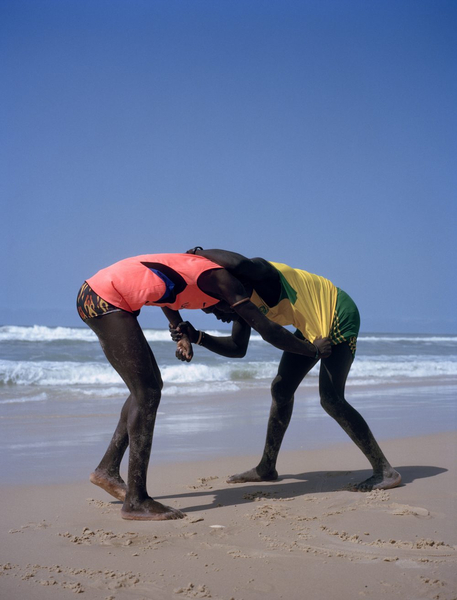
Figure + Ground
Focusing on our relationship to the environment, CONTACT 2011: Figure & Ground looks at how photographic images alter perception, inform knowledge, and uncover meaning. From classical portraits of the figure in the landscape to critical views of a ground transformed by human intervention, the works in this year’s festival explore the shifting tensions between humanity and nature.
The concept of figure and ground was first articulated in Gestalt psychology, which investigated perception and visual organization. This school of thought— centred on how our senses apprehend form as a whole—has an ongoing relevance to present-day discourse and art practice. While visual experience is shaped by a confluence of psychological and physical forces, we aspire to view the world as a totality, to establish order from chaos.
Marshall McLuhan, the renowned Canadian media theorist, developed his concept of figure/ground, borrowed from the Gestalt approach, to examine the influences that permeate and change social structures. He looked beyond what we immediately perceive—the figure—towards what typically goes unnoticed—the ground. McLuhan used the analogy of the car as the figure, and described the ground as the environment incidental to its existence, such as roads, highways, and the auto and oil industries.
Positioning the photographic image as a construction of figure and ground, this framework provided a starting point for the festival theme, which is further examined throughout the primary and featured exhibitions, public installations as well as a number of open exhibitions. One of the highlights is Edward Burtynsky: Oil, an exhibition with particular relevance to McLuhan’s analogy. Whereas Burtynsky’s photographs expose a landscape altered by humanity, Suzy Lake’s exhibition Political Poetics is a nuanced investigation of embodiment. These two Canadian artists were central to the development of the theme, from very different perspectives; both of them challenge the conventions of beauty. Other primary exhibitions, which total six this year, include highly evocative visual narratives by artists from around the globe. Their focus on the figure is revealed through representations of a constantly changing environment and the visual traces of humankind.
Our public installation program expands again this year, positioning photography within the city and—for the first time—across the country. Site-specific projects, produced by CONTACT in partnership with major cultural, commercial, and government organizations are presented at 14 selected venues. Showcasing artists from Canada and abroad, the interplay between the image and its surrounding environment draws attention to how photography effects changes in perception.
Reflecting a wide range of approaches—documentary to abstraction—the 37 featured exhibitions at diverse venues throughout Toronto evolved through a public call for proposals and by means of collaboration within the community. Artists from around the world expand the concept of the theme as a metaphor, allegory, theoretical platform, and compositional device.
The breadth of exhibitions in CONTACT this year reinforce the importance of art and significance of artists as communicators within society. In its simplest form, the theme Figure and Ground asks: What is our relationship to the environment? Looking at the photographs presented throughout the festival, we find many complex answers.
Bonnie Rubenstein
Artistic Director